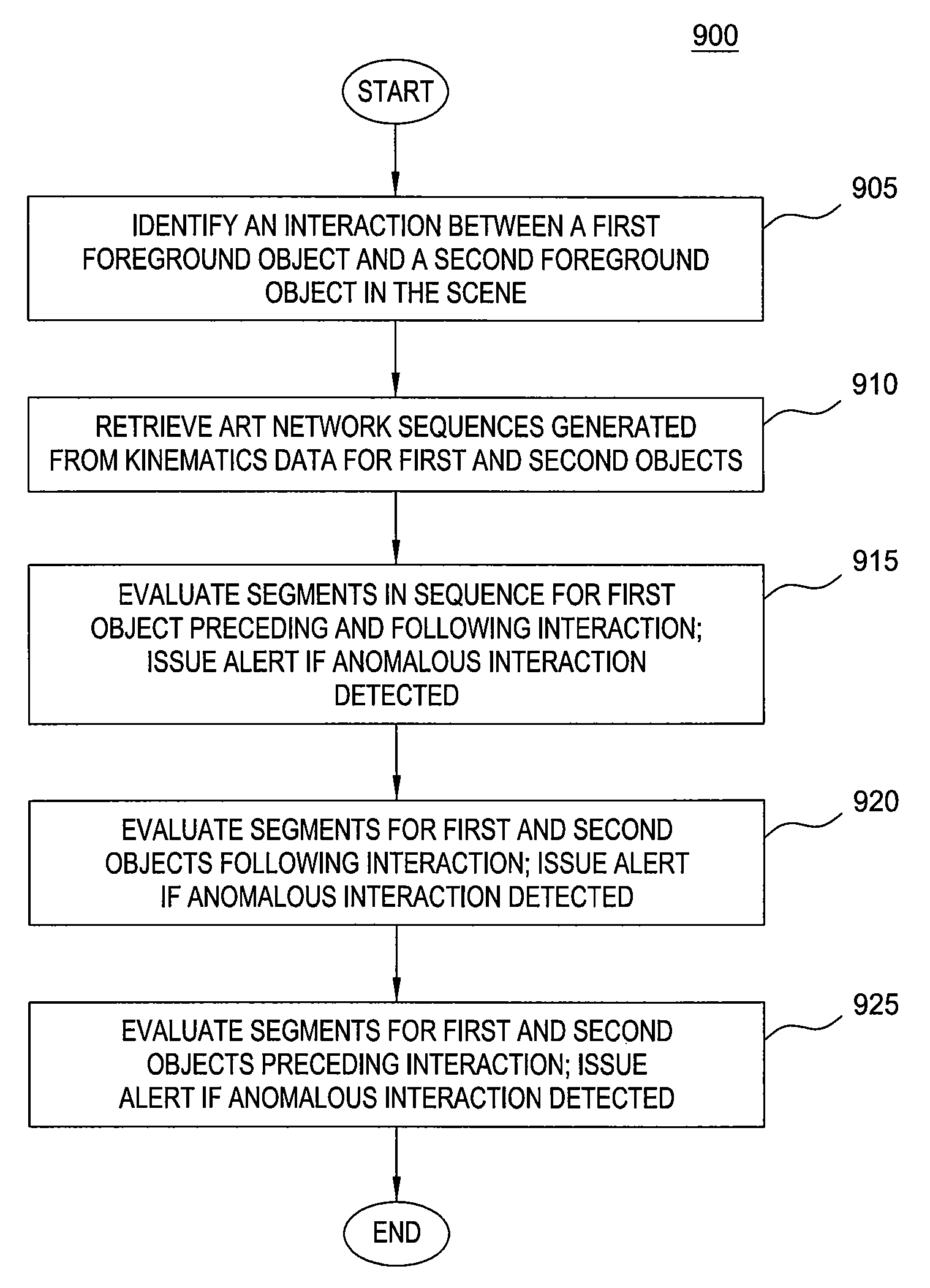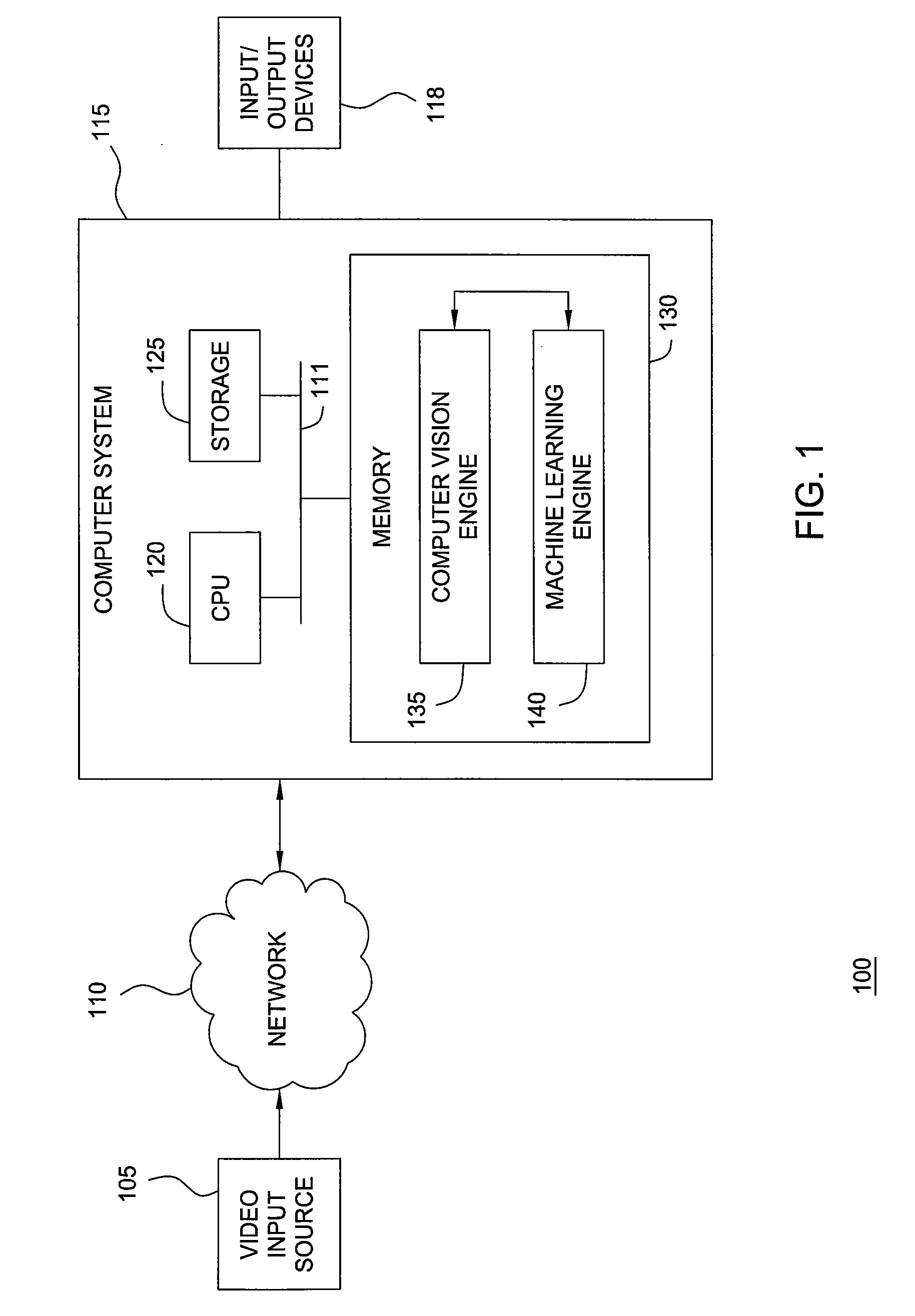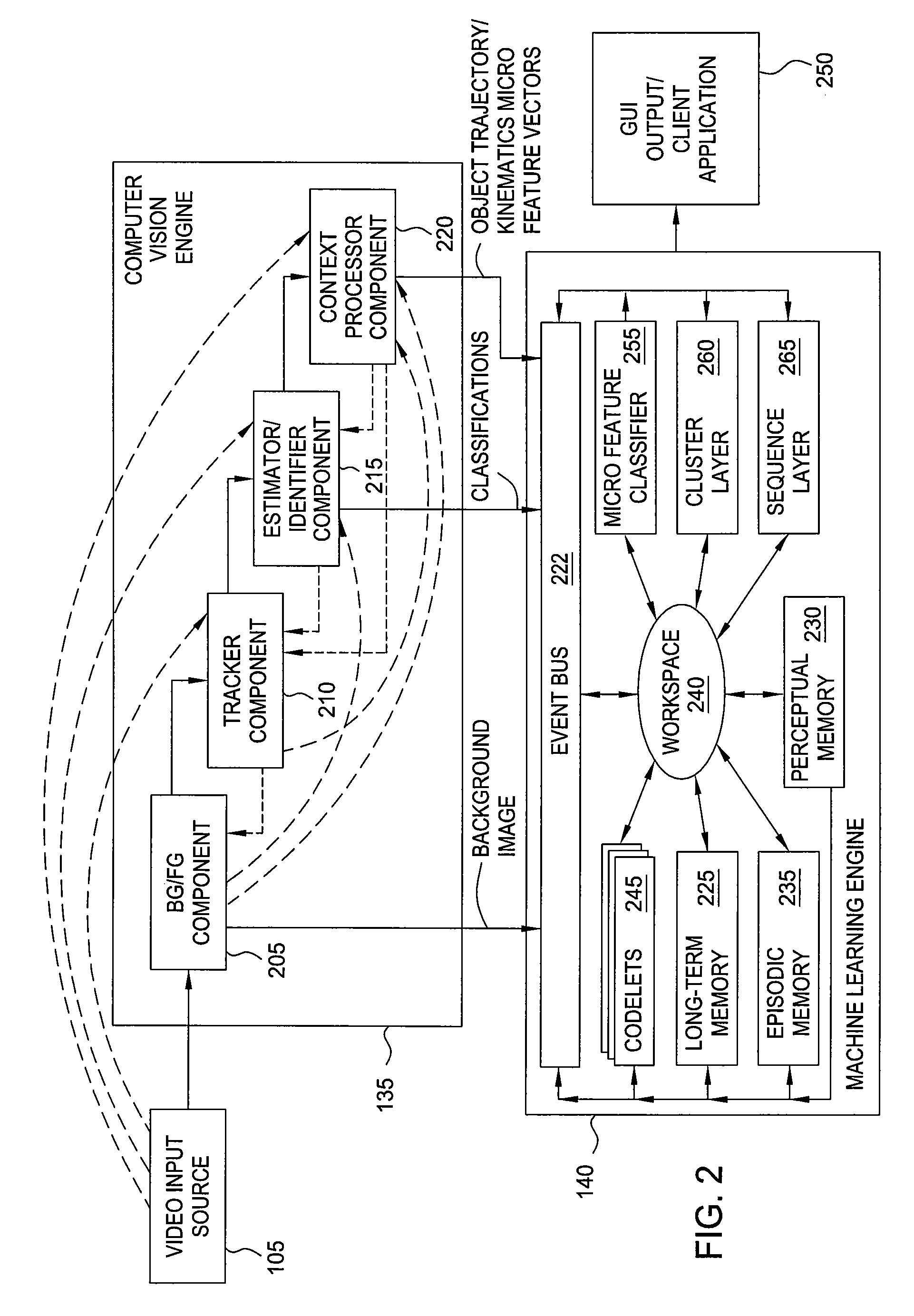Inter-trajectory anomaly detection using adaptive voting experts in a video surveillance system
a video surveillance system and adaptive voting technology, applied in the field of sequence analysis techniques, can solve the problems of system inability to recognize behavior, video surveillance systems with recognition capabilities that are labor intensive and prohibitively expensive to maintain or adapt for different specialized applications, and video surveillance systems that are typically unable to recognize new patterns of behavior
- Summary
- Abstract
- Description
- Claims
- Application Information
AI Technical Summary
Benefits of technology
Problems solved by technology
Method used
Image
Examples
Embodiment Construction
[0020]Embodiments of the invention provide techniques for identifying and evaluating segments within sequences of events observed by a video surveillance system, as well as predictive abilities for feedback to components of the system used to generate the sequence. As used herein, a sequence generally provides a string of labels assigned to data generated by a video surveillance system while observing objects acting within a scene. And a segment generally refers to a sub-string of elements in the sequence, as identified by the video surveillance system. For example, a sequence could correspond to labels assigned to a foreground object depicting a person walking across a street over a number of video frames. In such a case, one segment could include the labels corresponding to the person approaching a crosswalk and another segment could include the labels corresponding to the person crossing the street. Thereafter, another segment could begin which includes the labels assigned to the...
PUM
 Login to View More
Login to View More Abstract
Description
Claims
Application Information
 Login to View More
Login to View More - R&D
- Intellectual Property
- Life Sciences
- Materials
- Tech Scout
- Unparalleled Data Quality
- Higher Quality Content
- 60% Fewer Hallucinations
Browse by: Latest US Patents, China's latest patents, Technical Efficacy Thesaurus, Application Domain, Technology Topic, Popular Technical Reports.
© 2025 PatSnap. All rights reserved.Legal|Privacy policy|Modern Slavery Act Transparency Statement|Sitemap|About US| Contact US: help@patsnap.com



